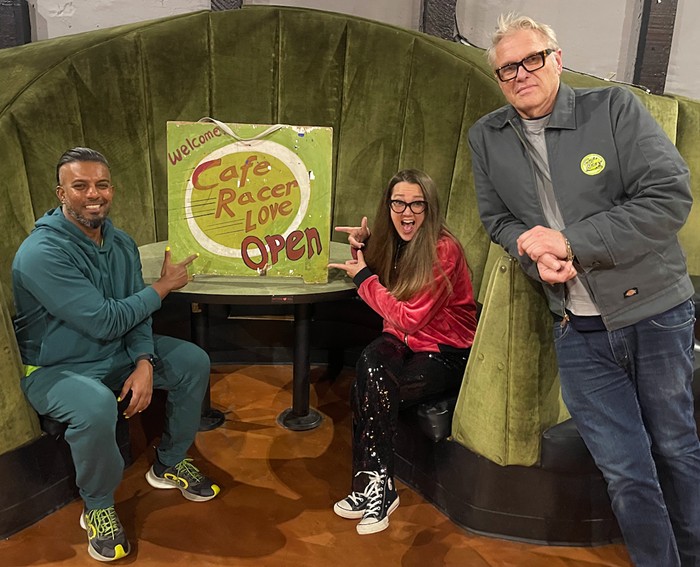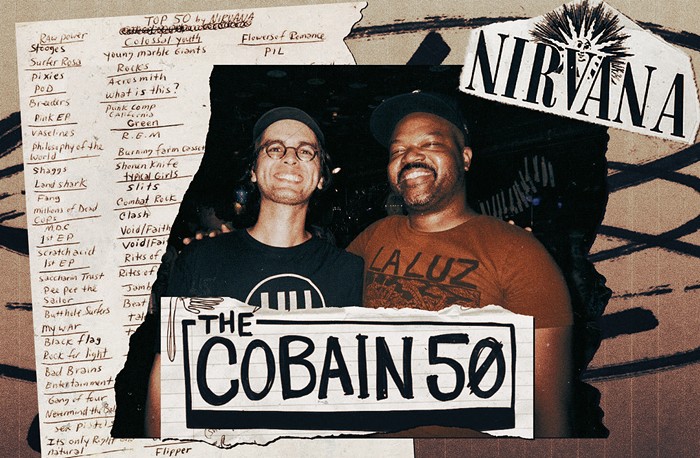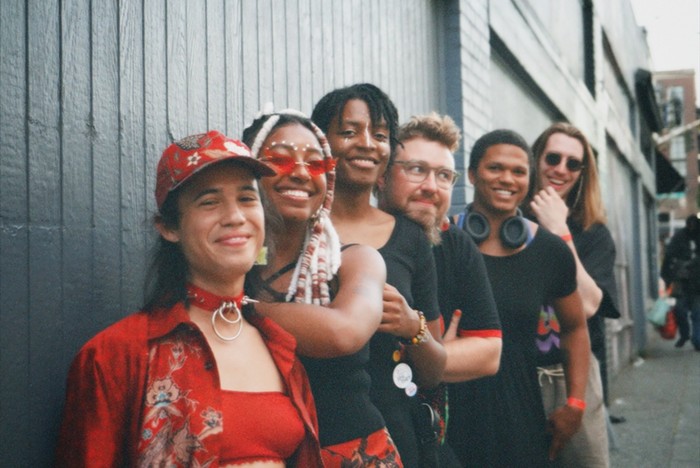
Frank D. Waldron is not often referenced in any conversations about the history of jazz music in Seattle. Even though he has direct connections to the careers of Northwest pillars like Jelly Roll Morton and Quincy Jones, it still takes a little bit of digging to churn up Waldron’s name and his work as performer, songwriter, and teacher in the early part of the 20th century.
That’s quickly changing thanks to the work of Seattle vintage jazz guitarist Greg Ruby and writer Paul de Barros. The two men, with the support of King County arts organization 4 Culture, have overseen a reprint of Waldron’s 1924 educational songbook Syncopated Classic. Packaged in a folder, the original publication is augmented by a deeply researched historical essay as well as lead sheets for 11 of Waldron’s original compositions.
Alongside this book, Ruby has overseen the recording and release of two albums of Waldron’s compositions. One features arrangements made by Ruby for his band the Rhythm Runners, while the other honors the original instrumentation of saxophone and piano (played by Jacob Zimmerman and Dalton Ridenour, respectively). In each case, the playful, slightly wonky spirit of Waldron’s musical mind comes to the fore.
“They very much have that late ragtime form of three parts, a key change, interludes,” Ruby says of Waldron’s songs. “But also melodically, there were a lot of idiosyncratic elements. It didn’t have as much of a blues feel brought into them. And surprisingly had composed two waltzes as well that were very much evoking a style and feel that he refers to on the cover as ‘novelty solos.’”
Ruby stumbled upon Waldron’s work about three years ago when he was in the process of writing some Prohibition-era jazz tunes for his band to perform for Lindy hop enthusiasts at Washington Hall. To flesh out the setlist, he started looking for similar tunes written by Seattle jazz musicians of that time period, turning to de Barros’s book Jackson Street After Hours: The Roots of Jazz in Seattle for assistance. It was there that he read about Syncopated Classic, Waldron’s self-published songbook meant to teach various saxophone techniques. Or, as the front cover of the book says, “how to slap tongue, flutter tongue, laugh, squeeze, etc.”
“That began this curiosity,” Ruby remembers. “I gotta find this book. I wonder what those pieces were like.”
He found out after a few months of digging through libraries and making inquiries with rare book dealers. Eventually, Ruby reached out to de Barros, who happened to have a photocopy of Syncopated Classic that he made during the research for Jackson Street. A few weeks later, the Rhythm Runners were working some Waldron tunes in with their pastiche efforts on stage.
“Then the thought came,” says Ruby, “‘Gee, someone should archive these compositions, because they’re not going to make it if it’s just a single photocopy in Paul’s basement.’ It was really one of those situations of one thing leading to the next driven by curiosity and inspiration.”

“It was the most frustrating, difficult research project I’ve ever worked on in my life,” de Barros says. “It was so difficult to find out anything. I went through days and days and days looking through microfiche of newspapers from Tacoma and Seattle. I went to the Bancroft Library in Berkeley [California], because Frank had grown up in San Francisco. That’s when I realized that he was born in 1890 and left San Francisco in 1907, which means all the records of his early life were destroyed in the earthquake and fire of 1906. We couldn’t even figure out what elementary school he went to.”
Off and on over the course of 18 months, the indefatigable pair managed to sketch out a rough life story, with more and more details coming into play upon Waldron’s arrival in Seattle in 1907. Even at age 17, he was quick to establish himself within the Northwest jazz scene, playing sax and cornet in a mixed bag of small and large combos like the Whang Doodle Orchestra and a quartet with pianist Glover Compton and drummer Leon Hutchinson, while also earning some extra scratch teaching young musicians.
It was through the memories of many of those then-up-and-comers, like Jones and bassist Buddy Catlett, that de Barros was able to get a more detailed picture. And while the photos he dug up from the era show a cherubic, light-skinned gent with a welcoming smile, what the author learned about Waldron along the way revealed a much more troubled figure.
“He was this dapper guy who dressed really well,” de Barros says, “who was gruff and swore and drank and talked about women all the time. A lot of his students were intimidated by him.”
The women in Waldron’s life fared worse. According to de Barros’s research, he married only once, and it only lasted about a year, with his ex-wife claiming infidelity and abuse, including knocking out one of her front teeth.
If Waldron was agonizing internally, that feeling never came out in the music. There’s a light touch even to ballads like the stutter-step strut of “Pretty Doll” and the stately “Valse Marguerite.” The tunes, as interpreted by Ruby and his players, evoke the spirit of Dixieland as tempered by the gray skies and laid-back, lived-in attitude of the Northwest.
“They’re very elegant,” de Barros says. “I think Greg did a great job of capturing that spirit. I also think that in the ‘20s in Seattle, there were other stylistic avenues that would also have been possible for Greg to choose. I think Frank Waldron might very well have been enchanted by the voicings that someone like Duke Ellington was using. A kind of sulfurous jungle sound. But who knows? We don’t know what Frank would have done with these tunes. I’m just glad that Greg made a choice and did what he did.”


















